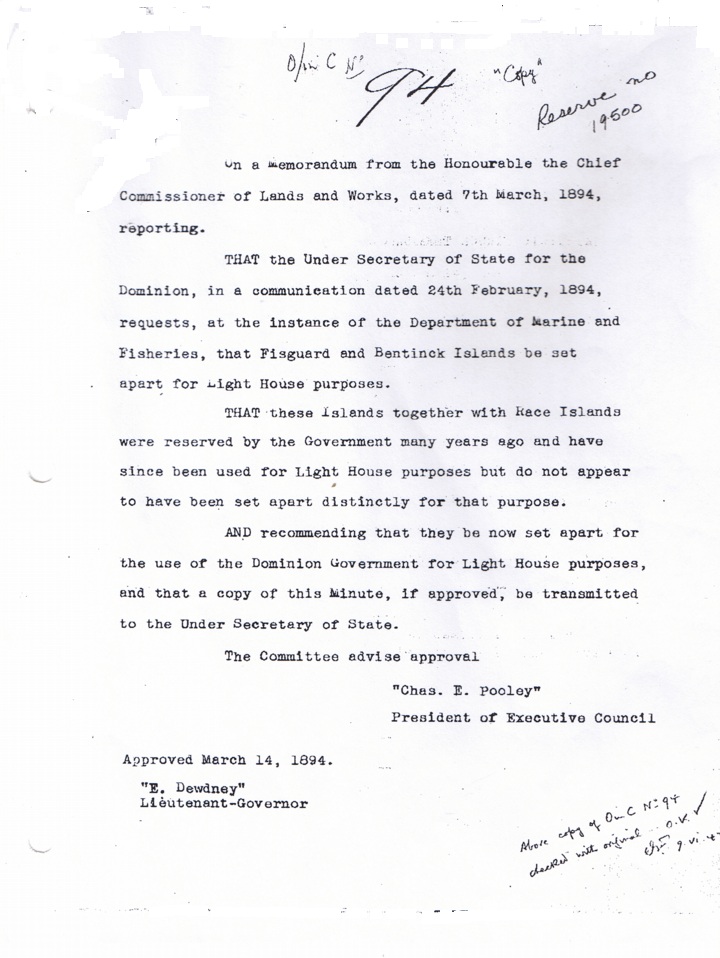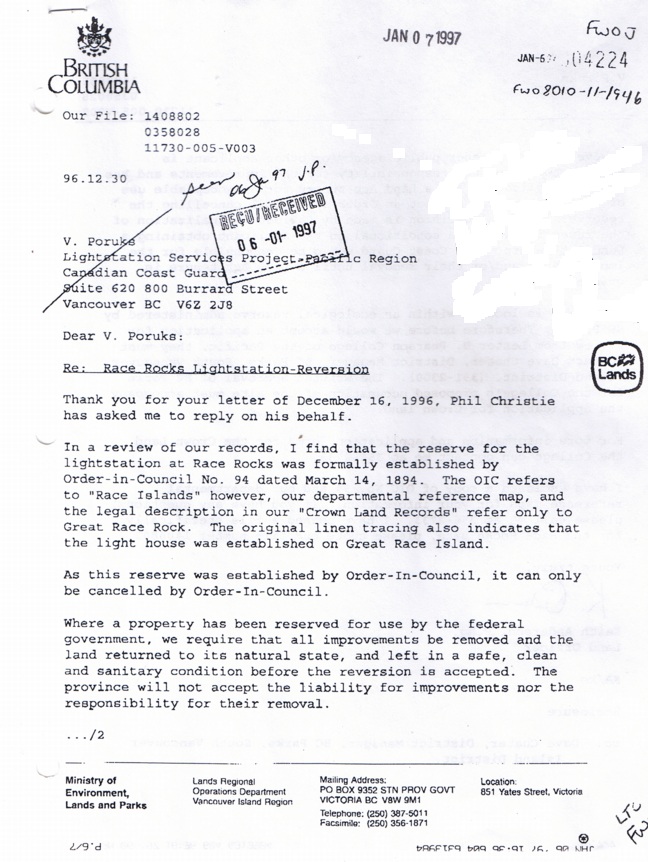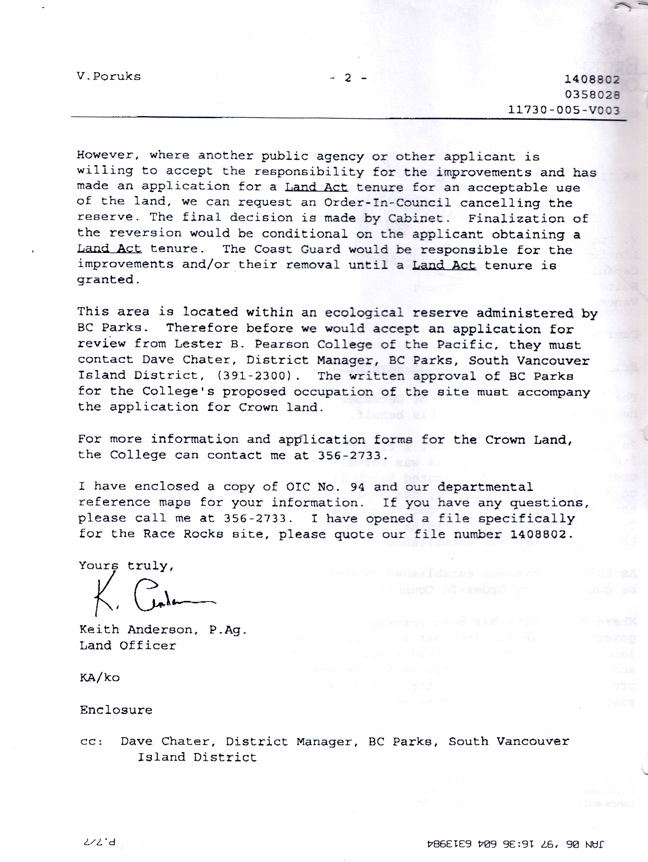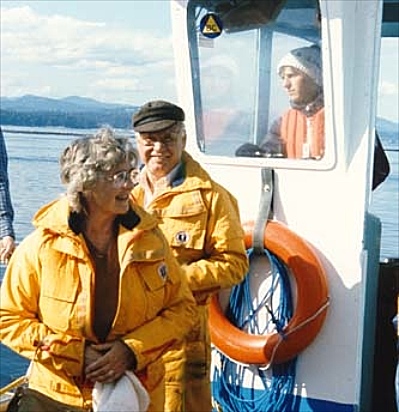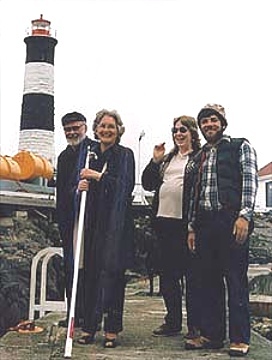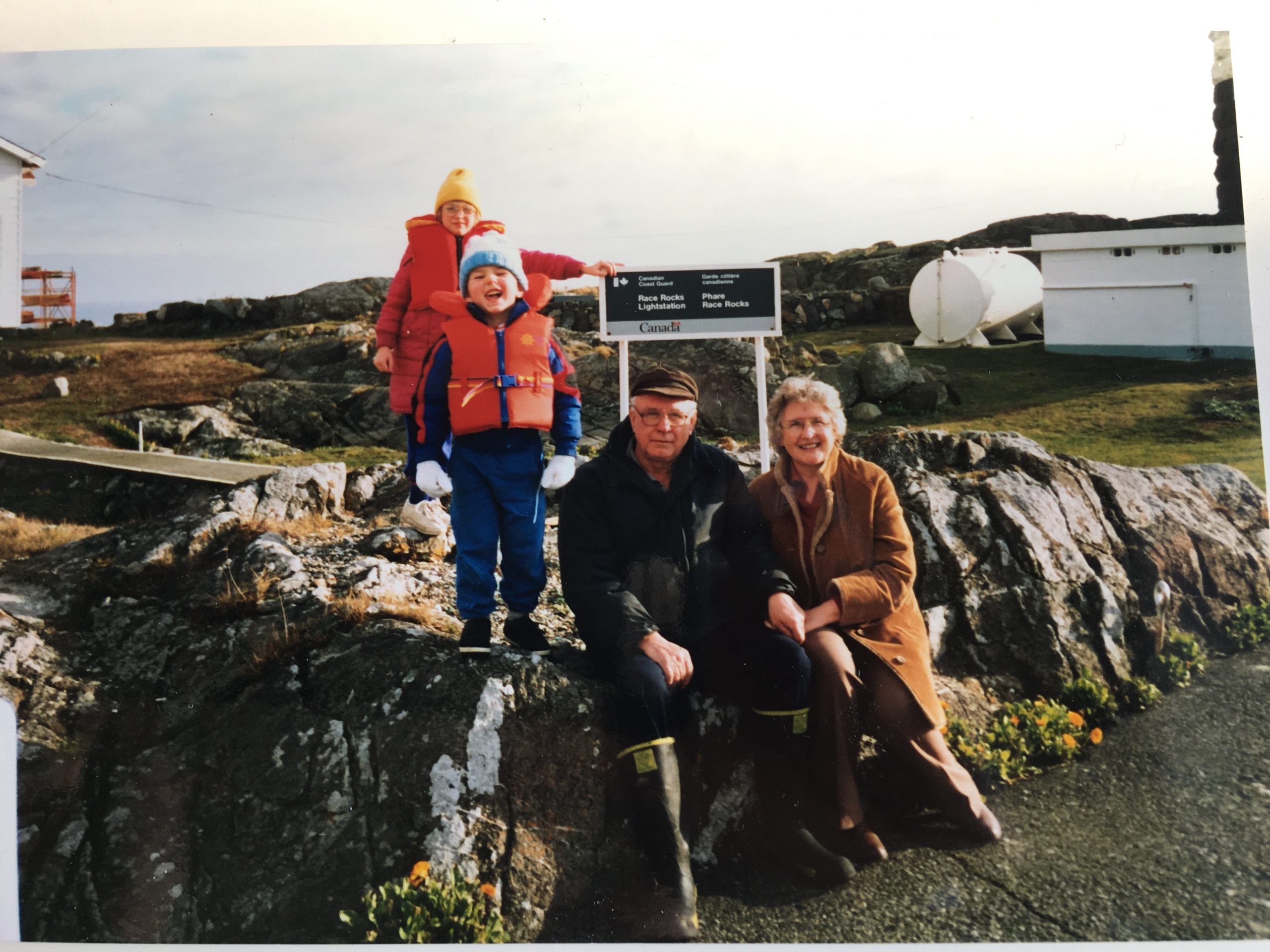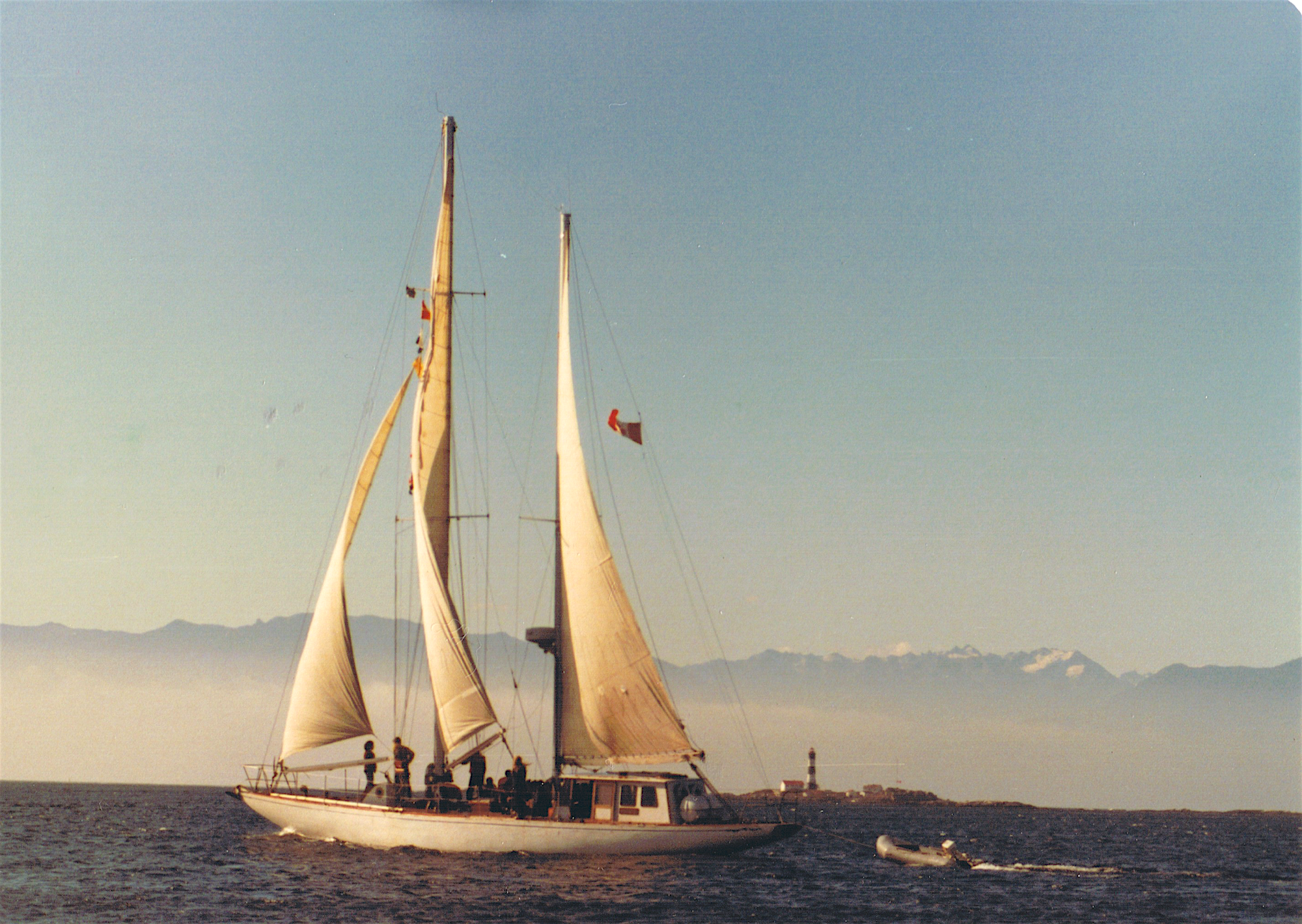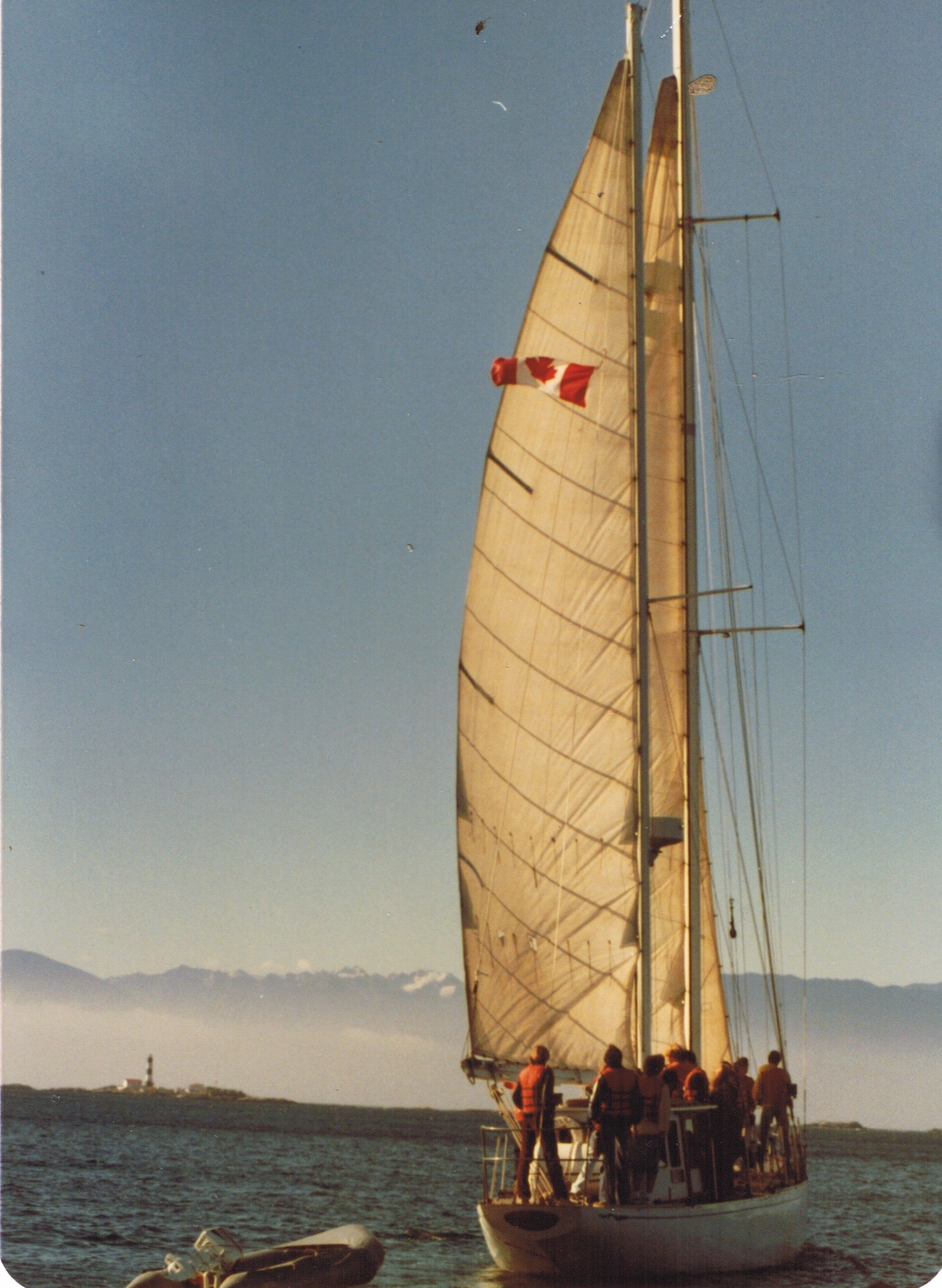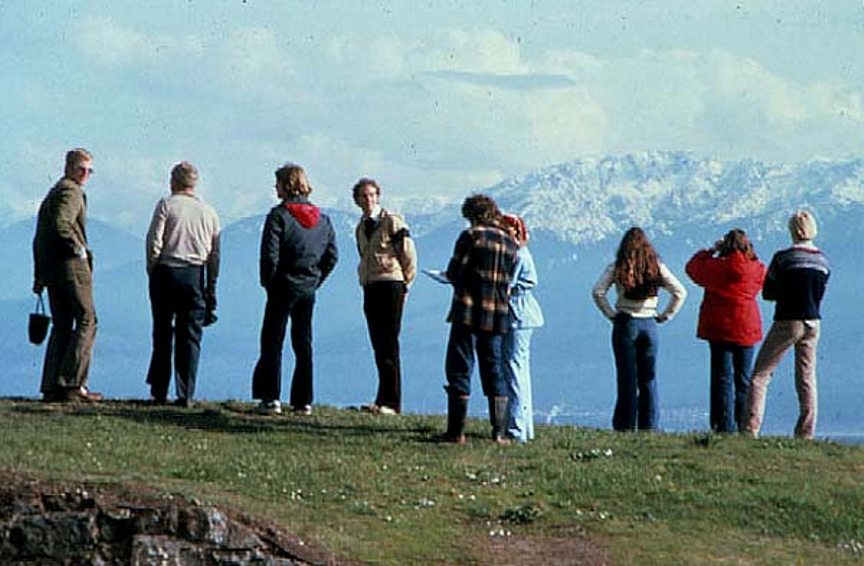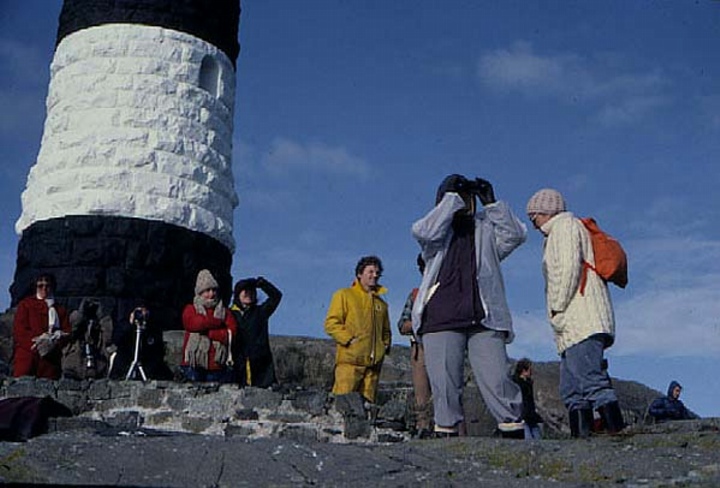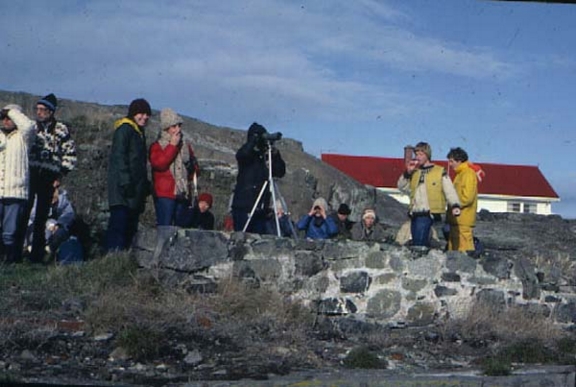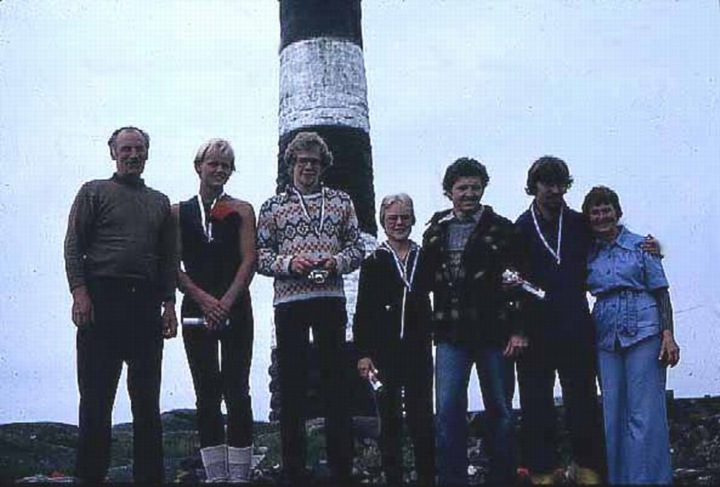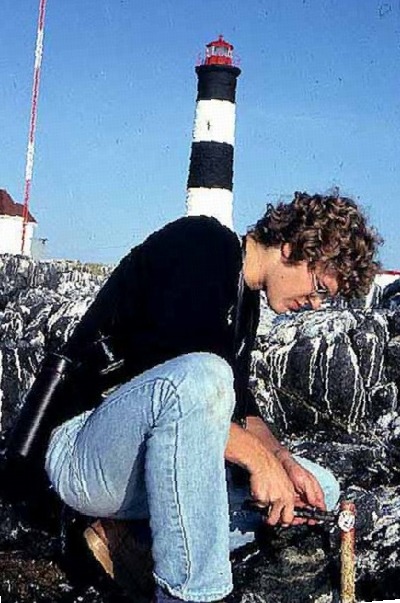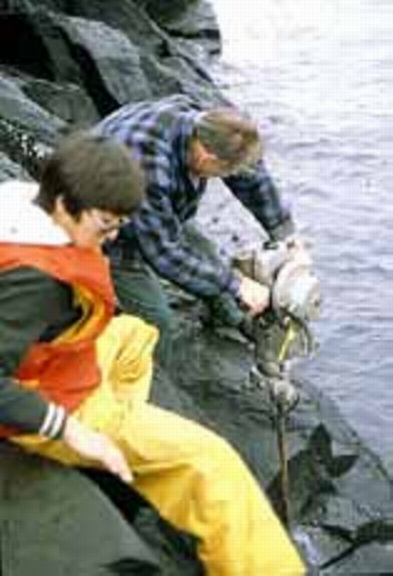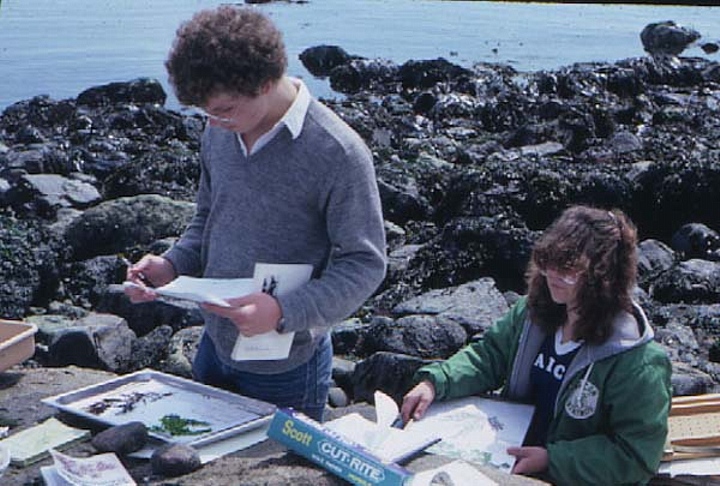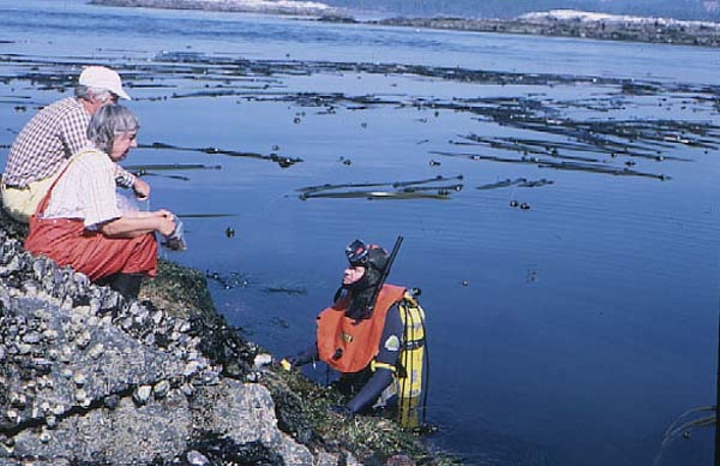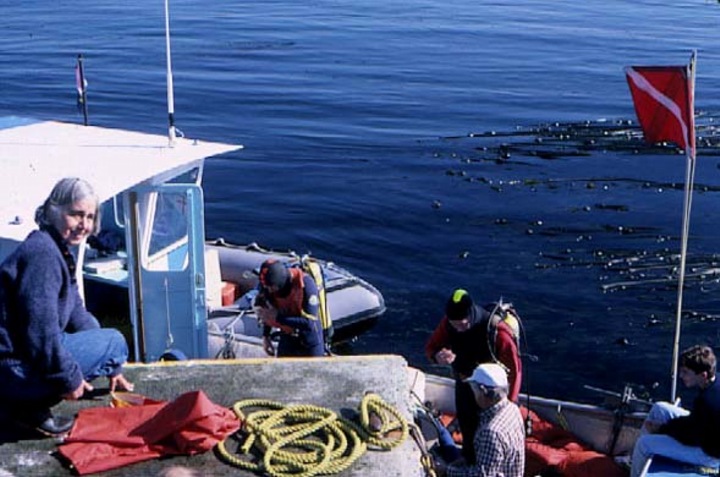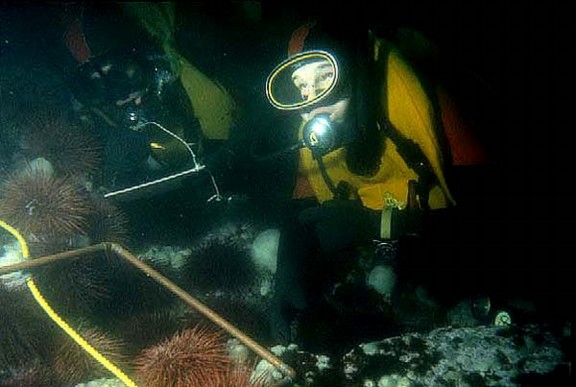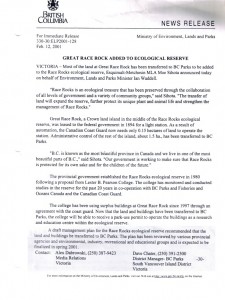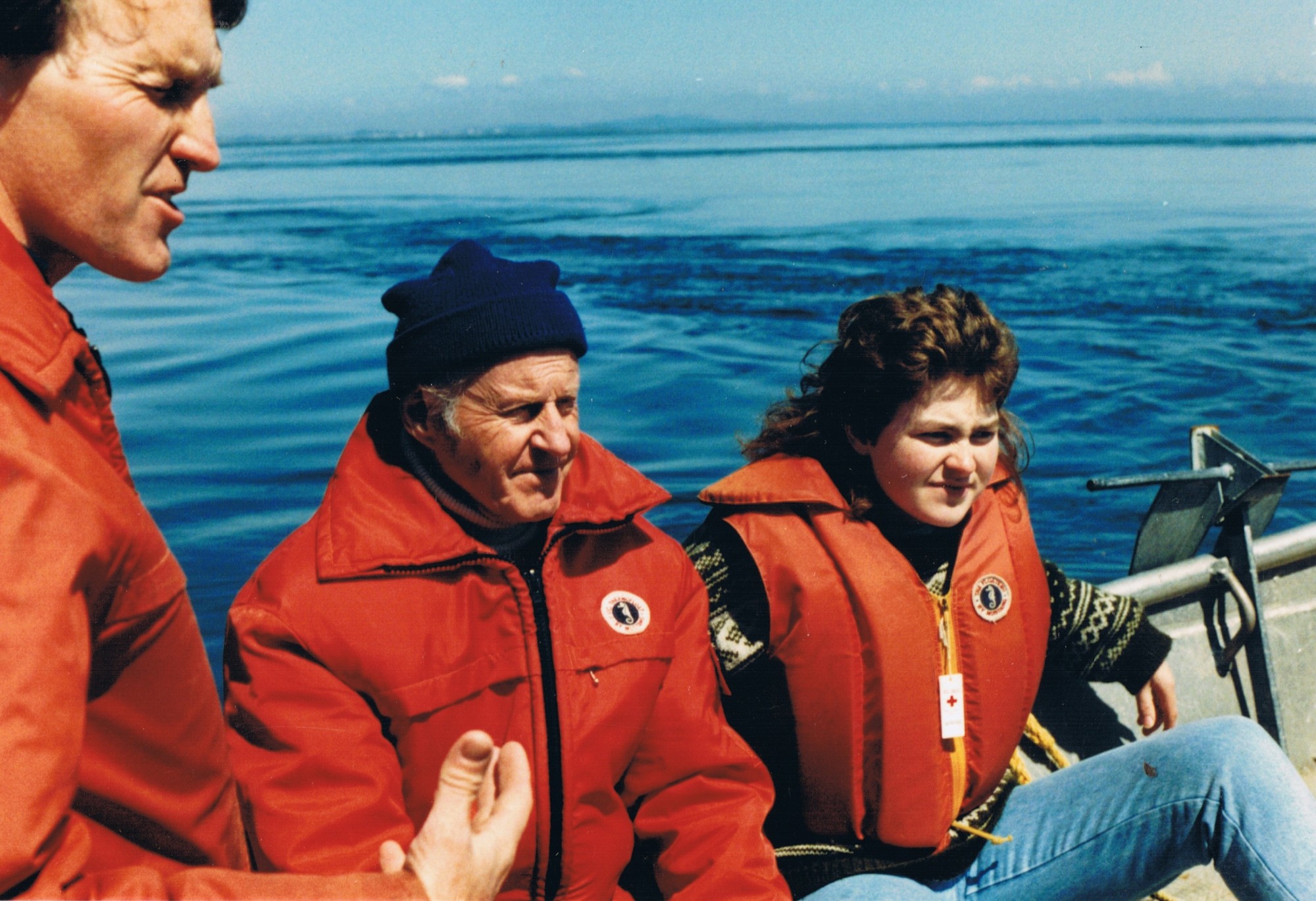Abstract: Race Rocks Ecological Reserve Proposal –
Lester B. Pearson College
On April 21, 1979, a proposal for an Ecological Reserve at Race Rocks was presented to the Ecological Reserves Branch of the Ministry of the Environment by the students of the diving service and the marine science class at Lester B. Pearson College. The proposal recommended that the reserve should be comprised of the islands and the surrounding subtidal area to a depth of 25 fathoms. The central island, Great Race Rock, could be excluded because of the Coast Guard facilities there, but it was recommended that a request should be made to the Coast Guard to consider its inclusion as well.
–
The proposal outlined the use that has been made of the area in the past, and the present use being made of the area by Pearson College. It was pointed out that the proposal is quite consistent with the purposes of reserves, as stated in the Ecological Reserves Act of British Columbia.
It was emphasized that the uniqueness of the area for its subtidal life and the ever-increasing pressures on the area from divers made the need for protection most urgent.
Included in the report were the results of several investigations on physical and biological conditions carried out by the students. Throughout the report, examples were referred to of how Pearson College might continue to contribute to the reserve in terms of making information available to help in the educational task in reserve maintenance. It was felt that the role of “steward” for the college could be appropriate.
Lester B. Pearson College of the Pacific
R.R. 1, Victoria, British Columbia, Canada V8X 3W9 Telephone (250) 391-2441
College du Pacifique Lester B. Pearson
Route rurale 1, Victoria, Colombie- Britannique, Canada V8X 3W9 telephone (250) 391-2441
–Workshop on The Race Rocks Ecological Reserve Proposal Saturday, April 21.7 1979, 10:30 a.m. at Lester B. Pearson College of the Pacific
Chairman: Garry Fletcher, Marine Science Department
The objective of the workshop is to present and discuss a proposal from the students in the diving service and marine science classes that recommends the establishment of the Race Rocks area as an Ecological Reserve.
Program
10:30 – 12:00 – Presentation of the. proposal by the students of the diving service,
12:00 – 1:00 – Lunch, cafeteria
1:00 – 2:00 – Slide presentation Brent Cooke, Provincial Museum, Victoria
2:00 – 3:30 – A discussion on the unique organisms of Race Rocks and the Ecological Reserve Concept, with the following resource people:
Wayne Campbell, Vertebrate -Zoology, Provincial Museum, Dr. D. Ellis, Biology Department, University of Victoria, Dr. Hans Romer, Ecological Reserves Branch, British Columbia Land Service, Ministry of the Environment
3:30 – 4:00 – Coffee, cafeteria
4:00 – 6:00 – Conclusions and Optional Tour of Race Rocks
CONTENTS PAGE
| Part A |
Introduction to the proposal for an Ecological Reserve at Race Rocks |
1 |
| Part B |
Delimitation and Description of the Proposed Ecological Reserve |
3 |
| Part C |
-The Use Made of Race Rocks by Pearson College in the Past. |
5 |
| Part D |
1978 – 79 Projects at Race Rocks |
6 |
| |
Birds and Mammals of the Islands |
21 |
| |
Species Check-list of Race Rocks |
14 |
| |
Bottom Profiles using Sonar |
29 |
| |
Physical Factors at Race Rocks |
30 |
| Part E |
The Role of Pearson College in Assisting the Maintenance of an Ecological Reserve. |
34 |
| Part F |
Future Projects at Race Rocks. |
35 |
| Part G |
Our Concerns for the Future of the Race Rocks Area |
37 |
| References |
|
38 |
| Appendix 1 |
Letter from Dr. Paul Breen, Pacific Biological Station, Nanaimo |
39 |
| Appendix 2 |
Race Rocks Project, October, 1978 |
41 |
| Appendix 3 |
|
|
-List of Plates
| 1. |
Great Race Rocks as it was in 1970 |
i |
| 2. |
Gorgonocephalus eucnemis |
iv |
| 3. |
Epiactus prolifera |
15 |
| 4. |
colonia ascidians |
15 |
| 5. |
Balanophyllia sp. |
19 |
| 6. |
Sponge |
19 |
| 7. |
Steller’s Sea Lion |
22 |
| 8. |
Killer whale near Race Rocks |
27 |
-LIST OF FIGURES
| Figure |
Description |
Page |
| 1 |
Map of Race Rocks in Relation to Victoria |
3 |
| 2 |
Proposed Ecological Reserve: Race Rocks |
4 |
| 3 |
Locations of Species Maps |
7 |
| 4 |
Key to Species Maps |
8 |
| 5 |
Map of Area 1 |
9 |
| 6 |
Map of Area 2 |
10 |
| 7 |
Map of Area 3 |
11 |
| 8 |
Map of Area 4 |
12 |
| 9 |
Map of Area 5 |
13 |
| 10 |
Individual dive paths |
13a |
| 11 |
Checklist of species verified from our Race Rocks Dives |
16 |
| 12 |
Vertical Section of one location of Great Race Rock |
20 |
| 13 |
Island Numbers for the Location of the Bird Colonies |
23 |
| 14 |
Total Number of Breeding Pairs at Race Rocks 1974-1975 |
23 |
| 15 |
Race Rocks, July 4th, 1974 No. of Nests |
23 |
| 16 |
Race Rocks, July 4th, 1974 No. of Eggs |
24 |
| 17 |
Race Rocks, July 14th, 1974 No. of Young |
24 |
| 18 |
Race Rocks, July 14th, 1974 No. of Nests |
24 |
| 19 |
Race Rocks, July 21st, 1974 No. of |
25 |
| 20 |
Distribution of Sea Lions at Race Rocks 1977 |
25 |
| 21a |
Rosedale Rock to Lighthouse Depth Sounding (bearing 335 magnetic |
29 |
| 21b |
Rosedale Rock towards most easterly island in Race Rocks group depth sounding (bearing of 358 magnetic) |
29 |
| 22 |
Map of Sonar Profiles |
28 |
| 23 |
Current direction on ebb tide |
31 |
| 24 |
Current direction on flood tide |
32 |
| 25 |
Temperature graph 1974, 1976 and 1948-57 |
33 |
page 1–
PART A. INTRODUCTION TO THE PROPOSAL FOR AN ECOLOGICAL RESERVE AT RACE ROCKS.
The students and teachers of the marine science and diving classes of Lester B. Pearson College of the Pacific recommend that the Government of British Columbia establish, under the Ecological Reserves Act of 1971, an Ecological Reserve in the area of Race Rocks near Victoria, British Columbia.
To be included in the reserve would be the islands and the surrounding subtidal area to a depth of 25 fathoms. It is appreciated that an exemption may be allowed for the land above the high tide level on the main island , Great Race Rock, as this is presently used as a light station by the Canadian Coast Guard.
This proposal outlines the use that has been made of the area by the college for educational purposes, and the plans for the future educational projects that can be carried out in the area.
The proposal is consistent with several of the purposes as stated in the Ecological Reserves Act.
“…. to reserve Crown land for ecological purposes, including:
- –(a) areas suitable for scientific research and educational purposes associated with studies in productivity and other aspects of the natural environment;
- –(b) areas that are representative examples of natural ecosystems within the province . ….
- –(c) areas that contain unique and rare examples of botanical, zoological or geological phenomena.”–
Part C of this report outlines the use made of Race Rocks by Pearson College marine science and diving students in the past few years. In addition, Part F outlines some of the potential of the area for future ecological studies that are observational in character.
The uniqueness of this area has been documented by Dr. Paul Breen of the Pacific Biological Station in Nanaimo (see appendix 1) and by James M. Goddard in a report to the National Parks Branch in 1975:
“The unique feature at Race Rocks is the subtidal flora and fauna inhabiting the high current velocity channels.” (2)
3 The interest shown by diving photographers recently is also well known. (3) Recently, the National Geographic Society has been in the process of preparing’a feature article on underwater life at Race Rocks; this also attests to the uniqueness of the area. page2 As far as being a representative example of natural ecosystems within the province, the area also has merit. It is moreover one of the high current ecosystem areas that has proximity to a population centre and therefore receives more pressure from the public. –
It is to be hoped that the acceptance of this proposal will enable the preservation of this area for educational and research purposes, as well as for controlled recreational use by the public.
In recent communication with the Coast Guard, evidence has been obtained that could suggest that they would be willing to accept the Ecological Reserve being extended to include the main island, Great Race Rock.
We would highly encourage this, as it would be a more appropriate recognition of the close ecological links of the bird colonies on that island and the rich life in the surrounding area.
- –We have been advised by Mr. Tom Kew, the Regional Manager for Aids and Waterways in the Vancouver office of the Canadian Coast Guard, that the provincial government could send a letter requesting that the main island should be included in the Ecological Reserve.
- –He has indicated that he would see no problem with this as long as it did not interfere with the operation of the light station and foghorn. He suggested that the letter be sent to:
- –Mr. Larry Slaght
- –District Manager
- –Department of Transport
- –1405 Douglas Street
- –Victoria, B.C.
- -V8W 2G3

